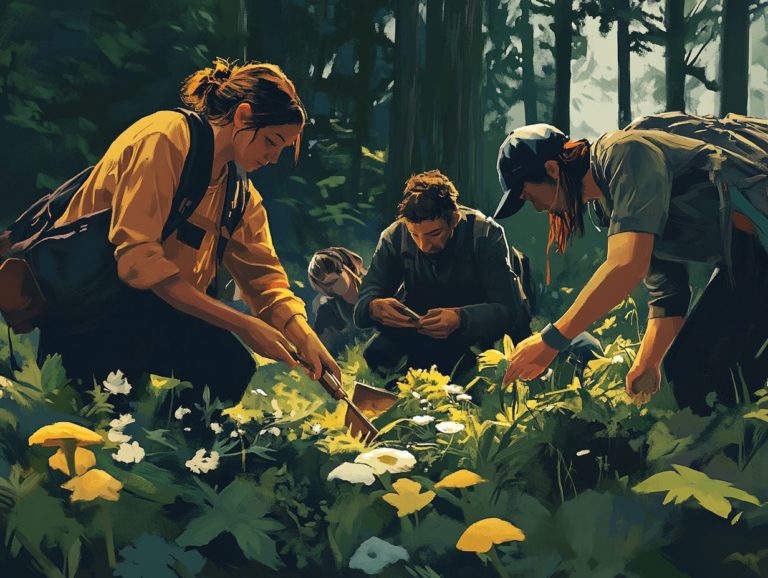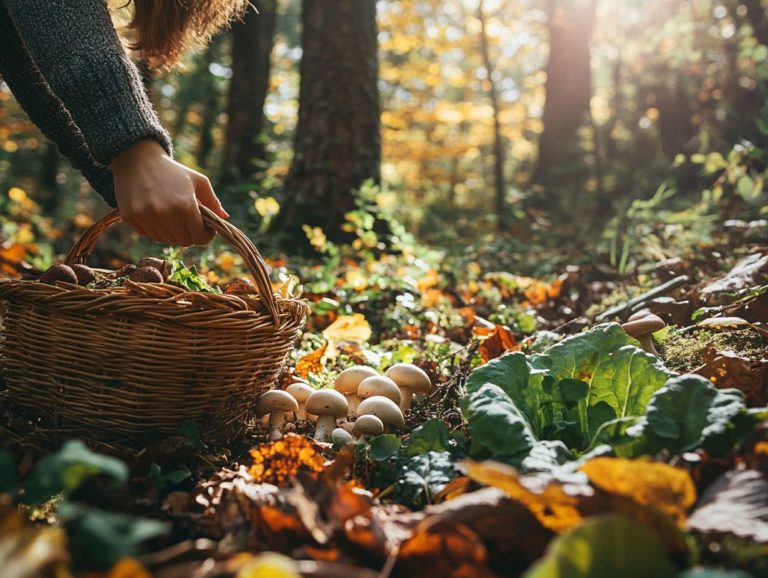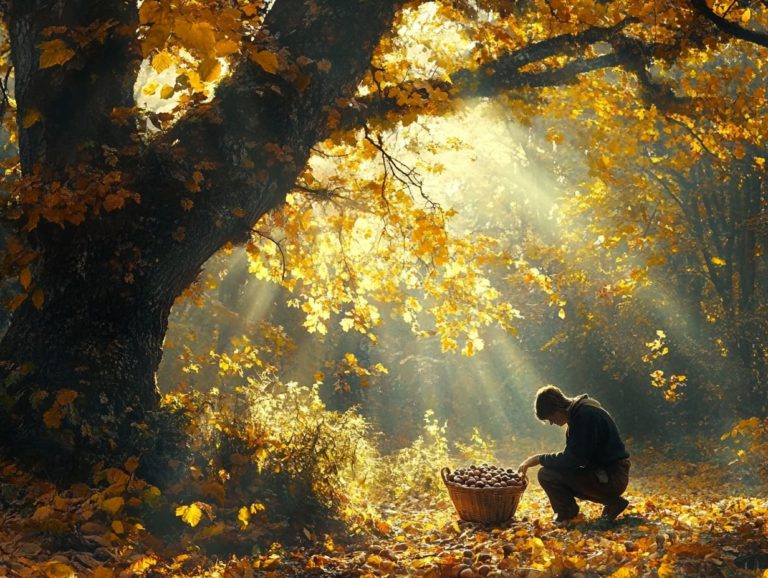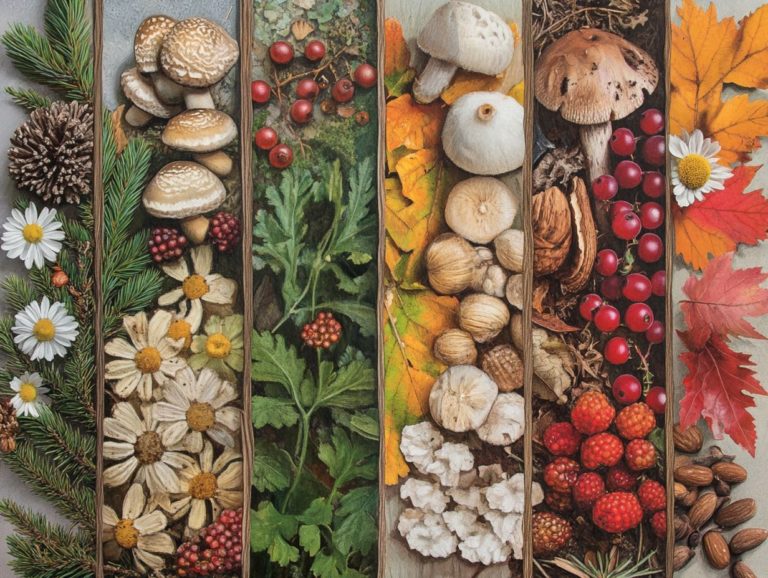The Role of Foraging Techniques in Sustainability
Foraging, the timeless art of gathering wild foods and medicinal plants, holds immense significance in an increasingly industrialized world. As you pursue sustainability, grasping the nuances of foraging can help you reconnect with nature and foster a sense of environmental stewardship.
This article delves into both traditional and modern foraging techniques. It illustrates how indigenous wisdom harmonizes with contemporary technology. You ll find valuable tips for responsible foraging along with guidance on identifying edible plants and natural remedies. These insights empower you to fully embrace this enriching and sustainable practice.
Dive in to discover how foraging can deepen your relationship with the environment and nourish your body.
Contents
- Key Takeaways:
- The Importance of Sustainable Foraging
- Traditional Foraging Techniques
- Modern Foraging Techniques
- Sustainable Foraging Practices
- Foraging for Food
- Foraging for Medicine
- Frequently Asked Questions
- Why are foraging techniques essential for a healthier planet?
- How do foraging techniques contribute to sustainable food systems?
- What are some examples of foraging techniques used in sustainable practices?
- How do foraging techniques support biodiversity conservation?
- What is the role of foraging techniques in keeping cultural practices alive?
- How can individuals incorporate foraging techniques into their daily lives for sustainability?
Key Takeaways:
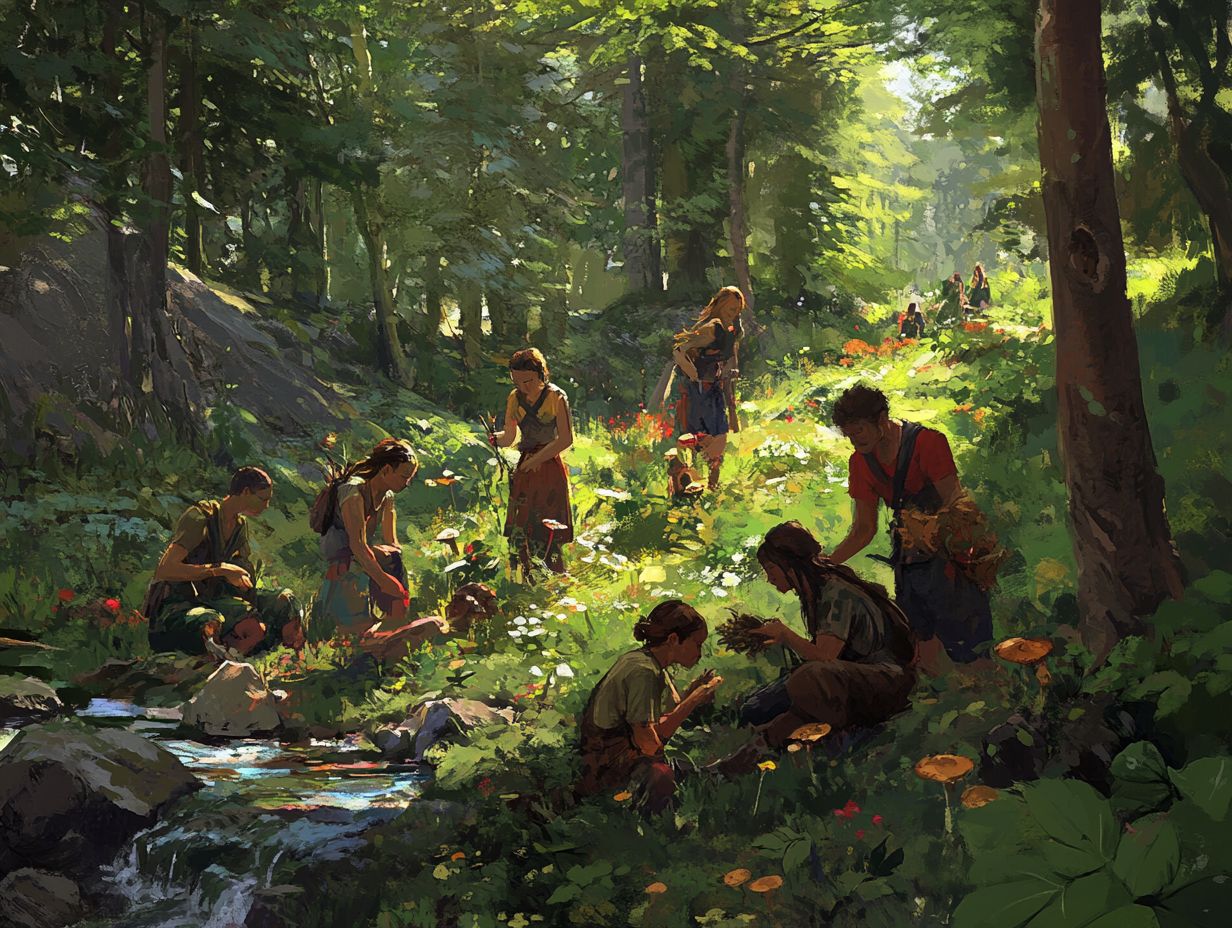
- Foraging plays a crucial role in promoting sustainable practices and protecting the environment.
- Indigenous foraging techniques offer valuable insights for sustainable living and should be preserved and integrated into modern practices.
- Responsible foraging practices, such as proper identification and only taking what is needed, are essential for maintaining a healthy ecosystem.
The Importance of Sustainable Foraging
Sustainable foraging is not just a practice; it’s essential for enhancing biodiversity while deepening your connection to nature and promoting food security in your community. Utilizing top resources for sustainable foraging can greatly enrich your experience.
By emphasizing responsible harvesting methods, you help ensure that wild resources remain abundant for generations to come. This approach provides a sustainable alternative to conventional food distribution systems, aligning perfectly with the increasing demand for environmentally friendly food sources.
As contemporary challenges like climate change and ecological pressures threaten our natural ecosystems, engaging in sustainable foraging can help you play a vital role in preserving biodiversity. By using foraging techniques to connect with nature, you also contribute to a healthier planet.
Understanding Foraging and Its Impact on the Environment
Foraging is an ancient practice where people harvest wild foods, profoundly impacting the environment, both positively and negatively, especially regarding ecological variety and managing invasive species.
This time-honored tradition not only reconnects you with nature but also plays a crucial role in fostering biodiversity. By selectively gathering native edible species like wild berries, mushrooms, and greens, you contribute to the balance of local ecosystems.
Your efforts can support the development of food forests, designed to mimic natural ecosystems and provide diverse edible plants. When you choose to consume invasive species like garlic mustard and Japanese knotweed, you actively participate in controlling their spread, benefiting native flora and fauna in the process.
Thus, foraging transforms into a meaningful contribution to ecological health, extending far beyond mere food sourcing.
Traditional Foraging Techniques
Traditional foraging techniques have been cultivated over centuries by indigenous cultures worldwide. These cultures draw on a rich understanding of seasonal changes, local ecosystems, and wild food sources. This deep knowledge enables them to practice sustainable harvesting, which plays a crucial role in food security that aligns with their environment.
These methods showcase a remarkable awareness of biodiversity, revealing which plant species and fungi are safe to eat, as well as the art of responsible collection. By passing down this wisdom through generations, these communities sustain a profound connection to their natural surroundings, embodying exemplary practices in resource management and conservation.
Join the foraging movement today and explore the sustainable practices that nourish both the body and the planet!
Methods Used by Indigenous Cultures
Indigenous cultures have developed unique foraging methods that reflect their intimate relationship with the land. These methods showcase sustainable practices that enhance biodiversity while providing nourishment through wild food.
By actively engaging with surrounding ecosystems, communities utilize a variety of foraging techniques. This includes the careful harvesting of edible plants, mushrooms, and berries. These not only serve as vital food sources but also promote the health of their habitats.
For instance, certain communities practice rotational harvesting (harvesting in a way that allows the plant to regenerate), ensuring that plant populations remain robust and capable of regeneration.
Such methods resonate deeply with their ecological beliefs, emphasizing a profound respect for the interconnectedness of all living beings.
The knowledge passed down through generations about seasonal changes and animal behaviors embodies a holistic understanding of the environment’s cycles. This reinforces their role as a steward of biodiversity.
Modern Foraging Techniques
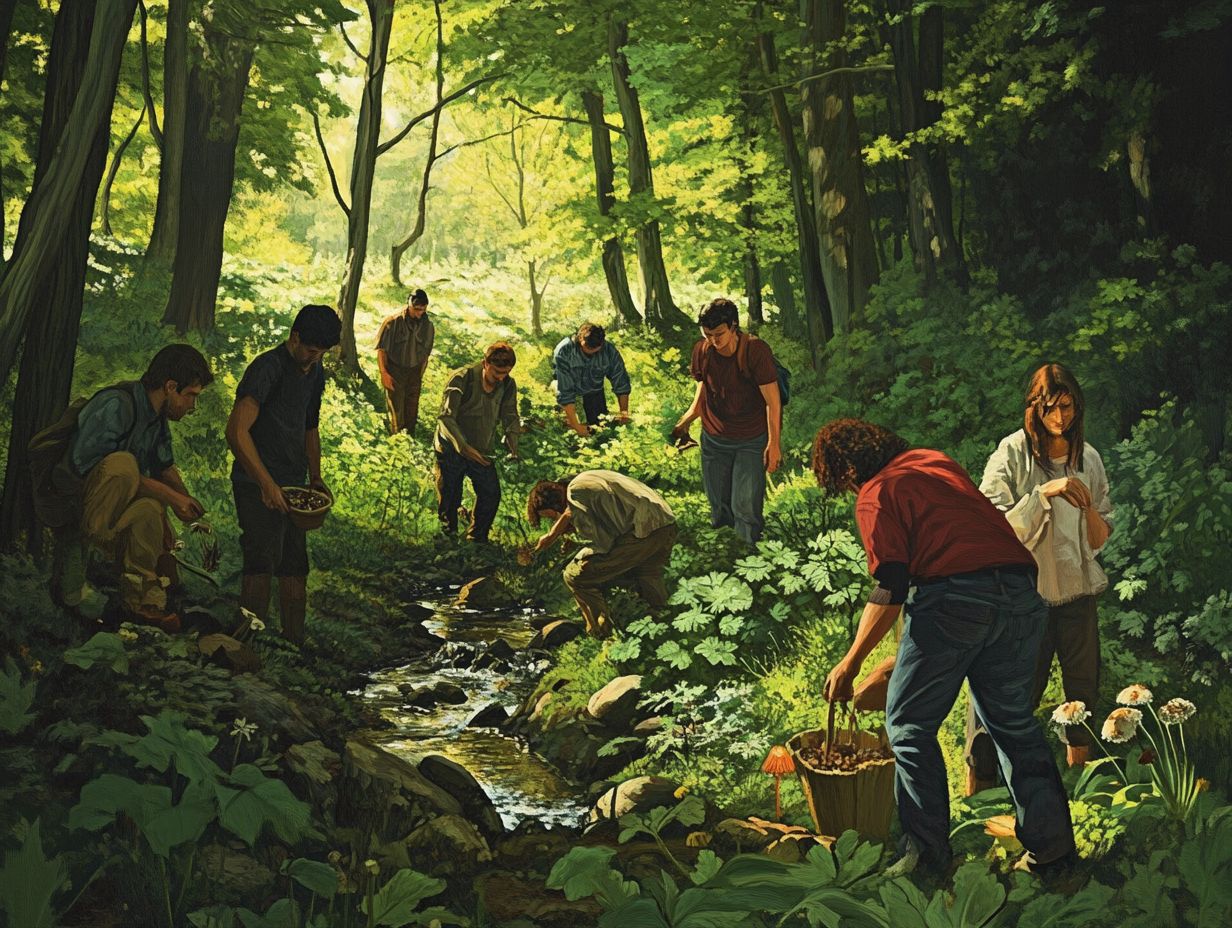
Modern foraging techniques have undergone a remarkable transformation. They seamlessly integrate technology and contemporary culinary arts to elevate the foraging experience and broaden access to wild food sources, even in bustling urban landscapes.
Urban foraging initiatives are gaining momentum. Local green spaces are becoming treasure troves brimming with edible plants and mushrooms.
This shift shows a thrilling new appreciation for nature’s bounty, even amidst the concrete jungle.
This harmonious blend of tradition and innovation not only enhances culinary repertoire but also champions sustainability by promoting the responsible harvesting of wild ingredients.
How Technology is Changing the Foraging Landscape
Technology is transforming the foraging landscape. It equips communities with innovative tools and resources that make it easier than ever to identify and harvest wild food.
This not only deepens the connection to nature but also enhances community engagement, bringing people together.
Mobile apps for plant identification have become critical allies. They allow for quick determination of which species are edible and which are best left alone.
Online community platforms further enrich the foraging experience, facilitating the exchange of tips, recipes, and personal stories. In this collaborative environment, enthusiasts can learn and grow together.
This evolution in technology encourages sustainable practices. It promotes responsible harvesting methods and fosters a sense of stewardship toward our natural resources.
As communities become more informed, their efforts contribute to biodiversity conservation and the overall health of ecosystems. This showcases the beautiful harmony between modern technology and traditional foraging practices.
Sustainable Foraging Practices
Sustainable foraging practices emphasize responsible harvesting methods. These methods are backed by research in the science of foraging techniques, ensuring the long-term viability of wild food sources while fostering community engagement and enhancing food security.
By following principles rooted in ecological impact and conservation philosophy, individuals can minimize their environmental footprint. This helps maintain the delicate balance of local ecosystems.
These approaches not only benefit individual well-being but also contribute to the health of the broader community. They cultivate an awareness of the significance of biodiversity and the value of natural foods.
Tips for Responsible Foraging
Responsible foraging involves specific tips and practices designed to minimize ecological impact. This promotes biodiversity and the health of local ecosystems.
If you re eager to dive into this sustainable practice, it’s essential to start by accurately identifying local edible plants. Understanding which ones might be invasive is crucial. This knowledge helps in protecting native flora.
To ensure that wild food populations remain robust, harvest only a small percentage of what you find. Staying attuned to seasonal changes is just as vital; after all, some plants flourish only at certain times of the year.
Observing their life cycles will empower you to forage responsibly and ethically.
Foraging for Food
Foraging for food requires you to identify edible plants and mushrooms in their natural habitats. This practice demands a deep understanding of seasonal changes and a keen appreciation for biodiversity, ensuring that your harvesting is both safe and sustainable.
Identifying Edible Plants and Fungi
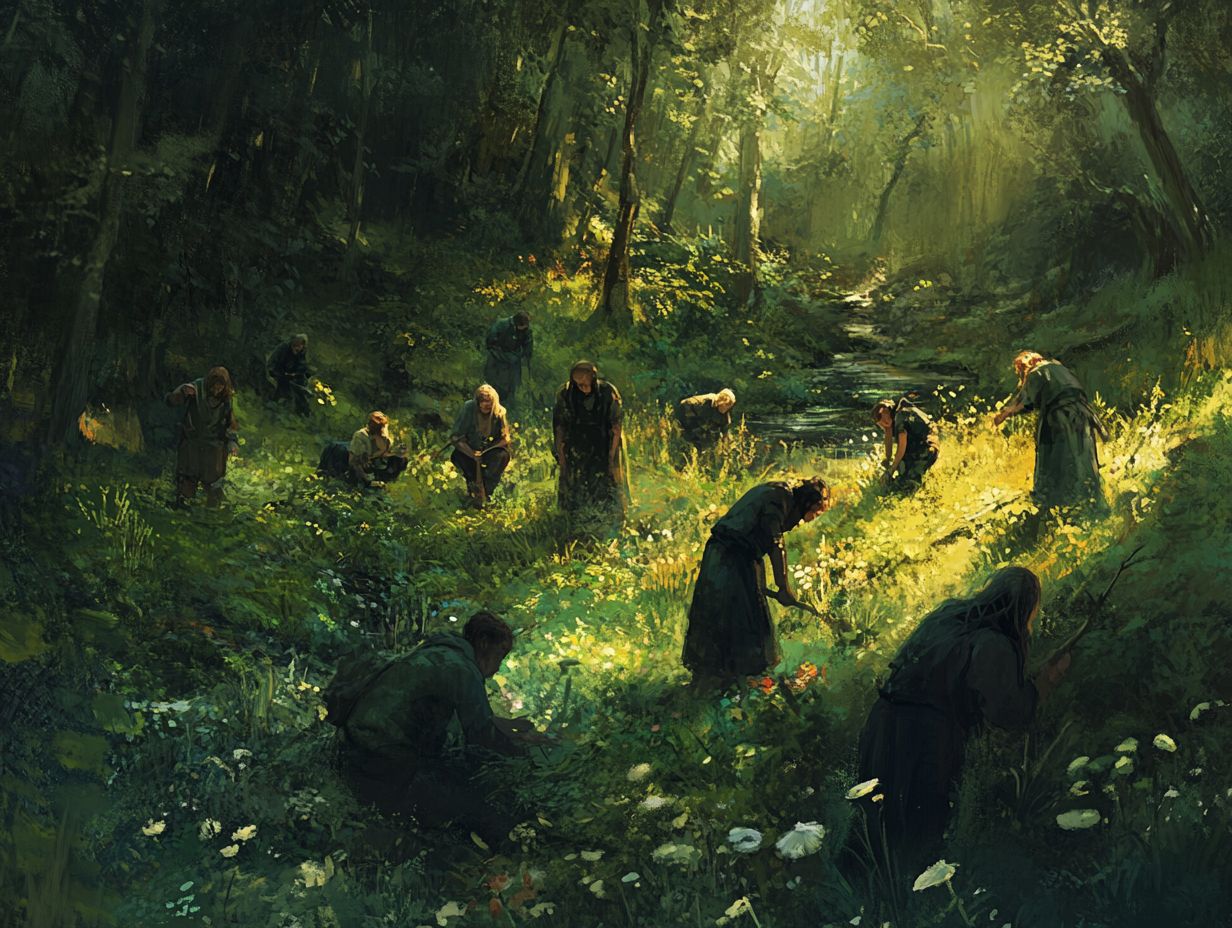
Identifying edible plants and fungi is an essential skill for foragers. It requires a solid understanding of various species and their habitats. Knowing how to distinguish safe options from toxic ones is crucial.
To cultivate this expertise, delve into field guides and explore local foraging communities rich with knowledge and shared experiences. Approach this journey with caution. A common fear of mushrooms often leads to misconceptions about their safety. Many believe all wild mushrooms are poisonous, obscuring the variety of safe mushrooms waiting to be discovered.
As you learn, prioritize practices like spore printing, which helps identify mushrooms, and closely observe local vegetation and its seasonal changes. Always consult multiple reputable sources to confirm your identifications. The consequences of error can be severe. By emphasizing safety and proper methods, you ll enhance your foraging experience and build confidence in your findings.
Foraging for Medicine
Discover the amazing world of wild medicine and unlock natural remedies! Foraging for medicine showcases the remarkable potential of wild food sources to offer natural remedies. By tapping into a diverse selection of medicinal plants, you can enhance your health and well-being while underscoring the vital significance of ecological diversity.
Using Plants for Natural Remedies
Using plants for natural remedies is a time-honored practice rooted in foraging traditions. Understanding medicinal plants and their properties allows you to uncover effective treatments for various ailments. This ancient wisdom reveals how certain species, like chamomile and echinacea, can help alleviate anxiety and enhance immune function, respectively.
As a responsible forager, you have the opportunity to discover these natural treasures while committing to ethical harvesting practices that protect local biodiversity. Engage in wild crafting or selectively gather only a portion of what s available. This approach lets ecosystems flourish, maintaining the delicate balance between human use and environmental conservation.
By promoting the growth of local native plants, you enrich the ecosystem and support the sustainable practice of gathering medicinal herbs within your community.
Frequently Asked Questions
Why are foraging techniques essential for a healthier planet?
Foraging techniques play a crucial role in sustainability by promoting the responsible use of natural resources. By using technology for sustainable foraging, we can ensure their long-term availability and minimize negative environmental impacts.
How do foraging techniques contribute to sustainable food systems?
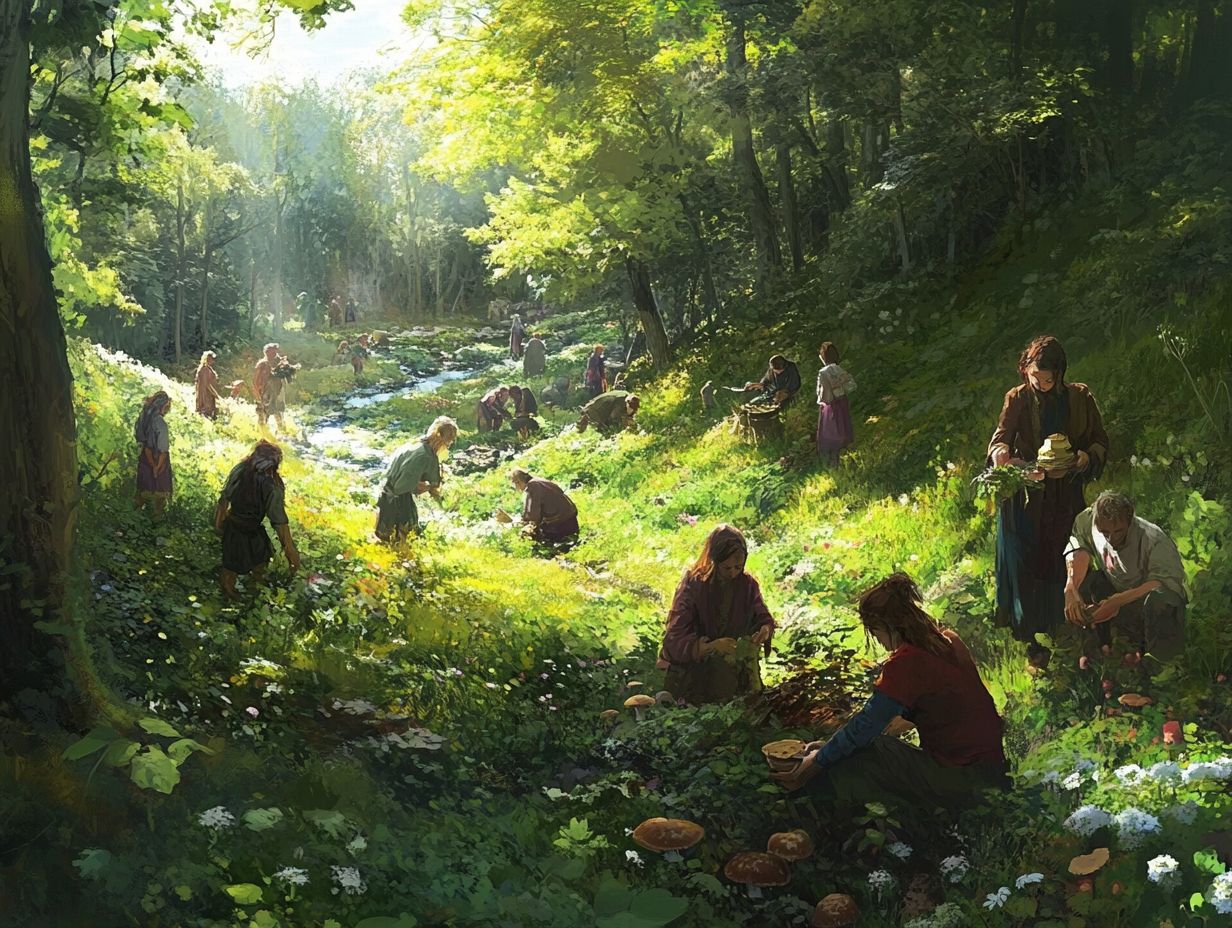
Foraging techniques allow the utilization of a diverse range of wild plants and animals, reducing pressure on traditional agricultural systems and promoting responsible living for a more sustainable and resilient food system.
What are some examples of foraging techniques used in sustainable practices?
Examples include selective harvesting, rotational grazing, and using traditional knowledge to identify and sustainably utilize wild edible plants and animals.
How do foraging techniques support biodiversity conservation?
By promoting the sustainable use of natural resources, understanding regional foraging techniques helps maintain healthy ecosystems and preserve biodiversity, ensuring the long-term survival of species and habitats.
What is the role of foraging techniques in keeping cultural practices alive?
Foraging techniques have been used by indigenous and traditional communities for centuries. These practices not only shape their cultural identity but also highlight the benefits of sustainable foraging and strengthen their bond with the land.
Preserving foraging techniques helps keep cultural practices alive and vibrant.
How can individuals incorporate foraging techniques into their daily lives for sustainability?
Individuals can explore local foraging techniques to enrich their diets and lifestyles. They can also advocate for sustainable practices and support organizations that promote responsible foraging.
Practicing ethical foraging is essential. Always take only what you need and respect the environment to contribute to sustainability.

